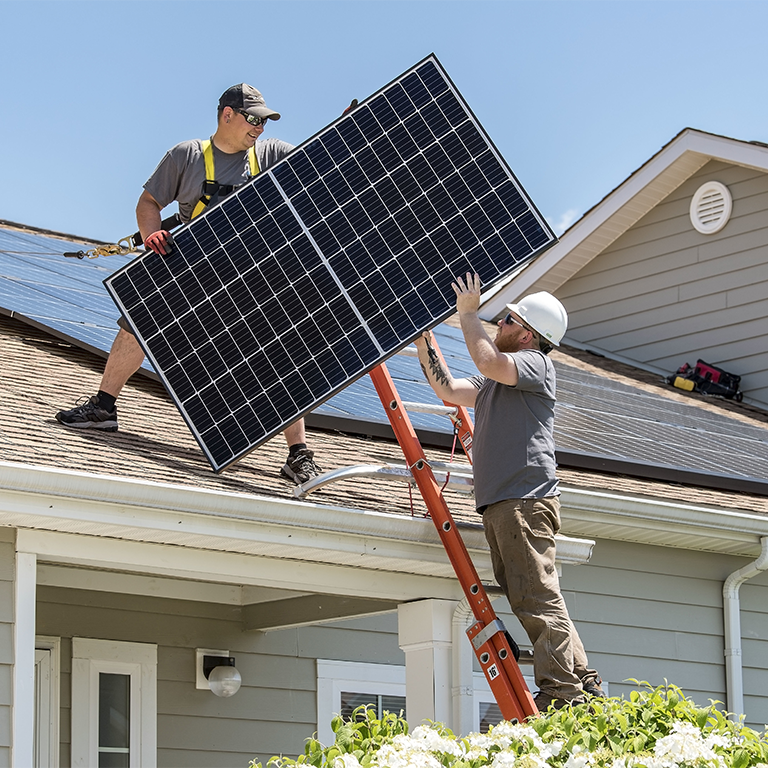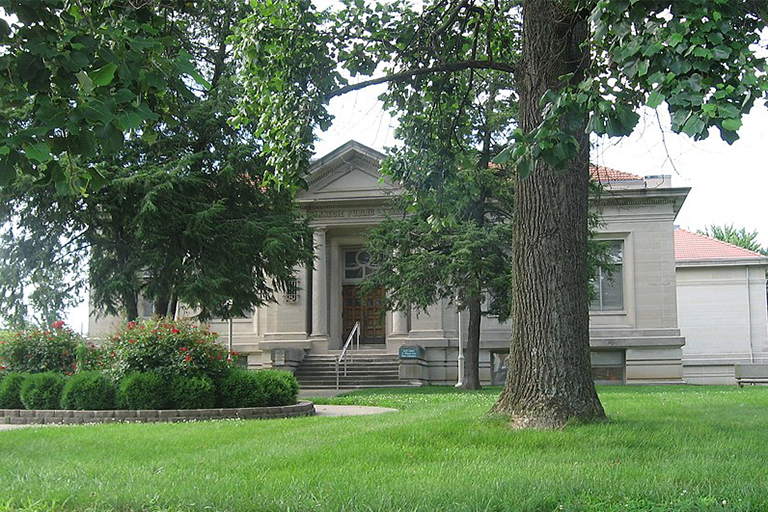Indiana University’s Environmental Resilience Institute (ERI) is working with Hoosier communities to lower energy costs and maintain critical services during power outages as part of a statewide coalition focused on expanding access to solar energy.
As a technical partner with Solar Opportunities Indiana (SOI), ERI is helping cities and rural communities across the state develop solar and battery storage projects that qualify for $16 million in funding. The funding represents a slice of the $117 million grant stewarded by SOI to connect low-income and disadvantaged communities in Indiana to the benefits of solar energy.
“Solar and battery storage have the potential to bring so many benefits to homeowners and communities—from lowering energy bills to cutting fossil fuel dependence to providing power during grid disruptions,” said Therese Dorau, ERI assistant director for policy and implementation. “But for too many Hoosiers, the upfront cost of these technologies is a barrier.
“Through SOI, ERI is proud to be providing technical assistance that will help more Indiana communities tap into clean energy and contribute to shared climate and resilience goals.”
This summer, ERI began working with communities on two different tracks—rural community resilience hubs and city-led solar programs. Read on to learn more about each track.
Turning rural libraries into resilience hubs
ERI is partnering with rural public libraries in English, Tell City, Dale, and Washington to establish community resilience hubs—community-serving facilities equipped with solar and battery storage systems that help ensure critical services remain readily available during power outages.
As hubs, these libraries can serve as a lifeline to rural areas in the wake of extreme weather by providing power for medical devices, refrigeration for medicine, emergency communications, and other critical needs.In addition to providing emergency power, the energy savings generated by solar can help support the programming and services of public libraries, which are facing new budget uncertainties due to shifting federal priorities.
“Right now, we pay about two to three thousand dollars a month for electricity,” said Rae Ann Kippenbrock, library director at the Lincoln-Heritage Public Library in Dale. “Cutting our energy bill in half or more would make a huge difference in terms of preserving programs affected by lost funding.”
Groundswell, a nonprofit focused on local resilience and an ERI partner, has pioneered the community resilience hub model in three states. To facilitate ERI’s efforts, Groundswell is providing training to McKinney Climate Fellows, IU students who are working with the public libraries on outreach and technical aspects of the projects.
Helping low-income Hoosiers go solar
To get more solar on the rooftops of low-income households, ERI is working with five Indiana cities—Bloomington, Evansville, Muncie, Richmond, and South Bend—to create custom solar programs based on communities’ needs and priorities. Participation in the program qualifies local governments for $3 million to implement their ideas.
Since 2022, retail electricity prices in the U.S. have increased faster than inflation, according to the U.S. Energy Information Administration, a trend that is projected to continue at least through 2026.
The rising cost of electricity has placed more Hoosiers in jeopardy of not being able to pay their utility bills. A survey of Indiana households conducted by IU researchers in 2020 found that 30% of respondents had to reduce or forgo expenses to pay an energy bill. Fifteen percent indicated they could not pay an energy bill during the prior month.
Those most at risk of falling behind on utility payments include low-income households, people of color, seniors, and households with young children.
Solar energy could help at-risk households afford electricity. Once installed, the energy generated by a rooftop solar installation directly offsets utility costs and can reduce bills by 50% or more.
"Research shows low- to moderate-income households who have rooftop solar are more likely to be able to pay their electricity bill and less likely to be disconnected,” Dorau said. “They’re also less likely to give up necessary expenses, like food or medicine, to afford their utility bill.
“These programs aren’t just a ‘nice to have’ perk for Hoosier communities. For many households, they could be the difference between surviving and thriving.”
About the Environmental Resilience Institute
Indiana University’s Environmental Resilience Institute brings together a broad coalition of government, business, nonprofit, and community leaders to help Indiana and the Midwest better prepare for the challenges of environmental change. By integrating research, education, and community, ERI is working to create a more sustainable, equitable, and prosperous future. Learn more at eri.iu.edu.




